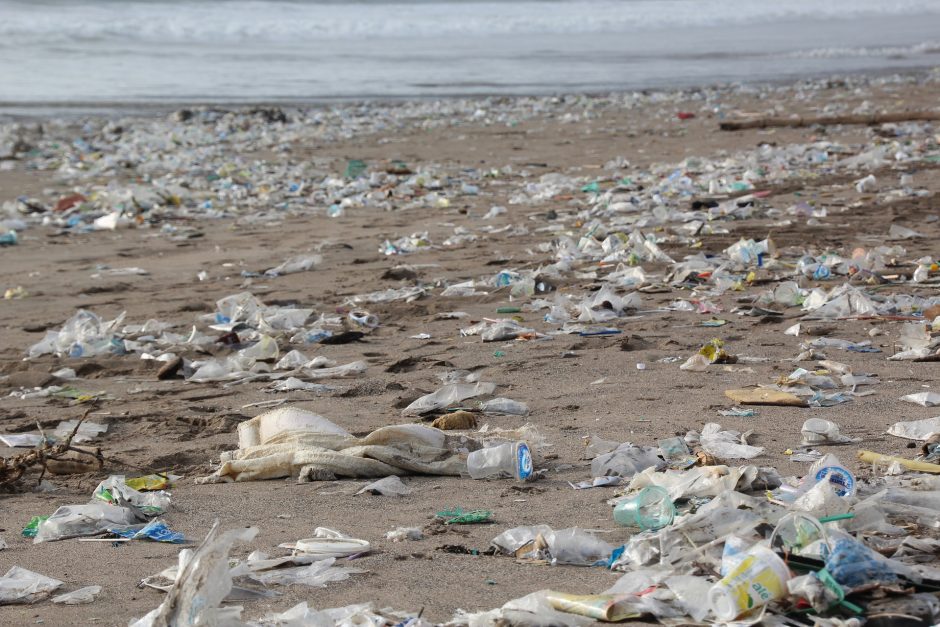Rivers of Plastic Waste Emptying into our Oceans Under Investigation

Plastic waste on a beach. (Credit: hhach, via Pixabay)
By now we know that plastics have invaded our global waterways, at the current rate of between 1.15 and 2.41 million tons of plastic entering the world’s ocean annually via rivers. We know that it’s deadly to wildlife, and that we haven’t even fully explained its toxic effects in the environment. This means that mitigation strategies for reducing the amount of plastic that enters the world’s waterways are essential—but these kinds of strategies can’t be formulated without a detailed understanding of the pathways plastics travel en route to the ocean.
This was the challenge hydrogeologist Christian Schmidt of the Helmholtz-Centre for Environmental Research GmbH – UFZ (UFZ) and an interdisciplinary team took on with their recent study.
Schmidt and the team were concerned about the growing environmental threat posed by the minute plastic particles that are now present in virtually every river, sea and ocean worldwide. Because plastic weathers at such a glacial rate, the problem is serious, and is worsening year by year. In an ideal world, we would remove all existing plastic from the world’s waterways, but as yet this is impossible. Therefore, teams such as the one headed by Dr. Schmidt are focusing on preventing plastic from entering these aquatic ecosystems in the first place.
“We had already worked on solute export from river catchments (such as nitrate and dissolved organic carbon),” Schmidt stated. “We knew that river networks connect the land with the sea, and also how much nitrate they deliver. So we were curious how much it would be for plastics, as it is commonly stated that 80 percent of marine plastic debris originates from land.”
The team started with two basic questions: Where does the plastic originate? And how does it get into the ocean? To answer these queries, the team analyzed multiple studies that examined plastic load in rivers around the world. Next, they converted the data from the studies so it could all be compared, and determined how much waste is not properly disposed of in the catchment areas.
“The study was a meta-analysis, we collected existing data on plastic in rivers,” Schmidt explained. “The challenge was to merge all the data, as there are no standard sampling protocols. For example, some studies counted particles, others reported masses. Also, the size fractions that have been accounted for were heterogeneous, ranging from manual sorting of larger pieces to high-end particle analytics examining microplastics.”
They discovered that this was the correlation; waste that was improperly disposed of in the catchment areas translated directly into more plastic in rivers, and eventually in oceans. Large rivers were bigger contributors to plastic pollution in oceans. In fact, the team found that the top ten plastic polluting rivers that carried the highest loads of plastics are responsible for about 90 percent of all plastic that enters the world’s oceans. These rivers, which flow through heavily populated regions—eight in Asia, two in Africa—are therefore prime focus areas for improved disposal of plastic waste in catchment areas.

Rivers as source for global marine plastic pollution.
(Credit: Susan Walter, UFZ)
Making changes for the future
Cutting down on plastics entering these larger rivers will mean improving both local waste management strategies and creating a higher level of public awareness surrounding the issue of plastics in the water. The researchers hope their work can help achieve these goals. Recent successes in the fight against plastic pollution, for example in several countries in Africa, may also provide both inspiration and useful advice for people working on this issue at the local level.
The UFZ team is already planning future investigations which they hope will contribute to advanced solutions to plastic waste in waterways.
Schmidt describes future investigations the team will be undertaking:
“Plastic concentrations in rivers, as most other particulate material, increase with increasing river discharge. Thus it is likely that a considerable fraction of the annual plastic load comes down the river during floods and smaller discharge events. This means that most of the plastic is transported during a relatively short period of a year. We are currently working on improving our understanding of the relationships between river discharge and plastic concentrations to be able to predict plastic loads and their variation over time.”
One peculiarity that the researchers encountered conducting this meta-analysis was the number of studies that focused on microplastics rather than larger masses.
“We found more studies with data on microplastics, that is particles smaller than 5 millimeters in diameter, likely because these small particles are ecologically more relevant as they can be ingested by marine biota,” Schmidt related. “However, large particles, although occurring in smaller numbers, contribute considerably to the total plastic mass exported into the sea. Furthermore, when they eventually become brittle and fragment, they become a source of microplastics. For all of these reasons, they should be included when plastic pollution in rivers is assessed.”
We’ll be on the lookout for the next installment in this research from the UFZ team. In the meantime, we may see the impact of this first round of research as people around the world work to dispose of plastic waste more effectively.




0 comments